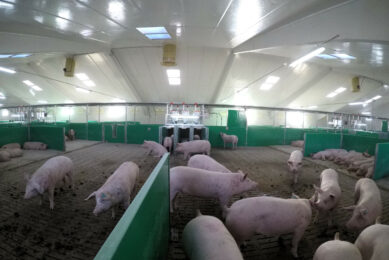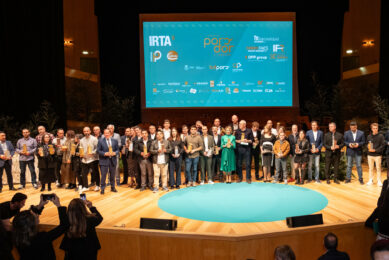Heterologous challenge with a highly virulent Asian (Genotype-II) strain
The emergence of highly virulent PRRS virus (PRRSV) strains in China in 2006 was a milestone in the epidemiology of PRRS in Asia. Nowadays, genotype II strains of different virulence coexist with genotype-I strains in this continent. At present, Amervac-PRRS (a genotype-I vaccine) is licensed and marketed in many countries of Asia and, therefore, contact of vaccinated herds with highly virulent genotype-II strains can be expected.
By M. Roca1, S. Bruguera1, M. Gimeno2, 3, I. Díaz3, I. Galindo2,3, J Segalés2,3, L. Darwich2, E. Mateu2,3, E. Martinez1, D. Llopart1, J. Maldonado1, R. March1. 1Hipra, Girona, Spain; 2Dept. Sanitat I Anatomia Animals, UAB, Bellaterra, Spain; 3Centre de Recerca en Sanitat Animal (CReSAUAB), Bellaterra, Spain.
The present study was aimed to explore the safety and potential efficacy of Amervac-PRRS against highly virulent genotype-II strain.
Materials and methods
Twenty-one four-week-old, PRRSV-naïve pigs were randomly divided into three groups (G1, n=8; G2 n=8; and G3, n=5) and housed separately in biosafety level 3 facilities at CReSA. Pigs in G1 were immunised intramuscularly with Amervac-PRRS (2 ml of 104,6 TCID50/ml). G2 and G3 were kept as unvaccinated groups. At day 32 post-vaccination, G1 and G2 pigs were intranasally inoculated with 2 ml of (1×105 TCID50/ml) of the Asian highly virulent isolate PRRSV21 (99% similar in ORF5 to other highly virulent isolates of Asia). Pigs in G3 remained as uninoculated controls. For the following 21 days, pigs were clinically examined (C) and rectal temperatures (T) were taken. Blood samples were taken on days, 0, 3, 7, 10, 14 and 21 post-challenge (PC). RT-PCR was used to assess the virological outcome of the challenge. Pigs were euthanized and necropsied on day 21 PC. Statistics were done using StatsDirect 2.7.5 software.
Results
Vaccination did not produce any adverse or side effect. All inoculated pigs became infected as determined by RT-PCR and developed fever but differences were noticed among groups (Figure 1). Thus, G1 pigs suffered less days of fever (p<0.05) than G2 ones did. Also, naïve (G2) pigs developed evident respiratory signs from day five PC that often persisted until day 18 PC. Two G2 pigs died (25 %).
In G1 pigs, signs were milder, of shorter duration and affected less number of pigs. At necropsy, lesions were more frequent and more severe in G2 pigs compared to G1 (Table 1). Findings compatible with bacterial complications (i.e. polyserositis and bronchopneumonia) were more common in G2.
Discussion
Vaccinated animals had clinical protection against the virulent challenge in spite of the different genotypes of the vaccine and the challenge isolate. This observation also suggests the existence
©











